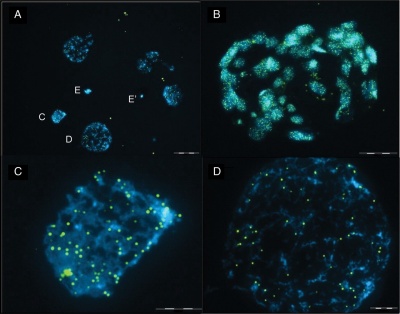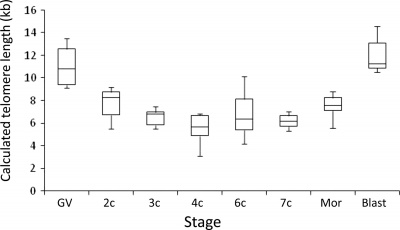ANAT2341 Lab 2 - Week 1
| ANAT2341 Lab 2: Introduction | Fertilization | Week 1 | Week 2 | Online Assessment | Group Project |
Molecular Changes
There are several important changes that occur in this new diploid cell beginning the very first mitotic cell divisions and expressing a new genome.
The oocyte arrested in meiosis is initially quiescent in terms of gene expression, and many other animal models of development have shown maternal RNAs and proteins to be important for early functions.
The new zygote gene expression is about cycles of mitosis and maintaining the toptipotency of the stem cell offspring cells.
The morula gene expression supports the formation of two populations of cells the trophoblast (trophectoderm) and embryoblast (inner cell mass), each having different roles in development, while maintaining the toptipotency of these populations.
Current research is now also pointing to non-genetic mechanisms or epigenetics as an additional mechanism in play in these processes.
Genome Expression
The following figure is from a recent study[1] using video and genetic analysis of in vitro human development during week 1 following fertilization.
- EGA - embryonic genome activation
- ESSP - embryonic stage–specific pattern, four unique embryonic stage–specific patterns (1-4)
Telomere Length
A recent paper has measured telomere length in human oocyte (GV, germinal vesicle), morula and blastocyst and found changes in this length in preimplantation embryos.[2] Telomeres are the regions found at the ends of each chromosome and involved in cellular ageing and the capacity for division. The regions consist of repeated sequences protecting the ends of chromosomes and harbour DNA repair proteins. In the absence of the enzyme telomerase, these regions shorten during each cell division and becoming critically short, cell senescence occurs.

|

|
| Early human telomeres[2] | Early human telomere length[2] |
References
- ↑ <pubmed>20890283</pubmed>| Nat Biotechnol.
- ↑ 2.0 2.1 2.2 <pubmed>20573647</pubmed>| PMC2930518 | Mol Hum Reprod.
Glossary Links
- Glossary: A | B | C | D | E | F | G | H | I | J | K | L | M | N | O | P | Q | R | S | T | U | V | W | X | Y | Z | Numbers | Symbols | Term Link
Cite this page: Hill, M.A. (2024, April 26) Embryology ANAT2341 Lab 2 - Week 1. Retrieved from https://embryology.med.unsw.edu.au/embryology/index.php/ANAT2341_Lab_2_-_Week_1
- © Dr Mark Hill 2024, UNSW Embryology ISBN: 978 0 7334 2609 4 - UNSW CRICOS Provider Code No. 00098G
